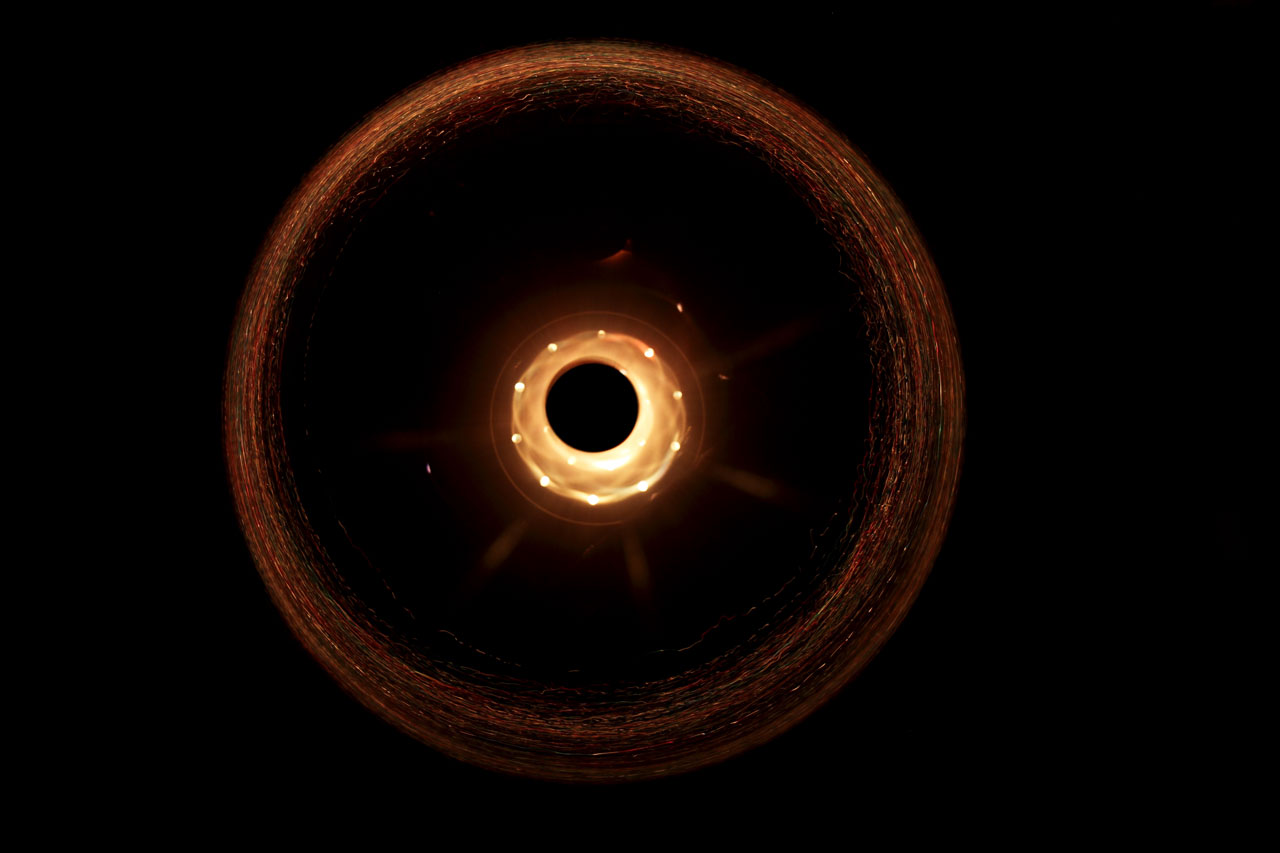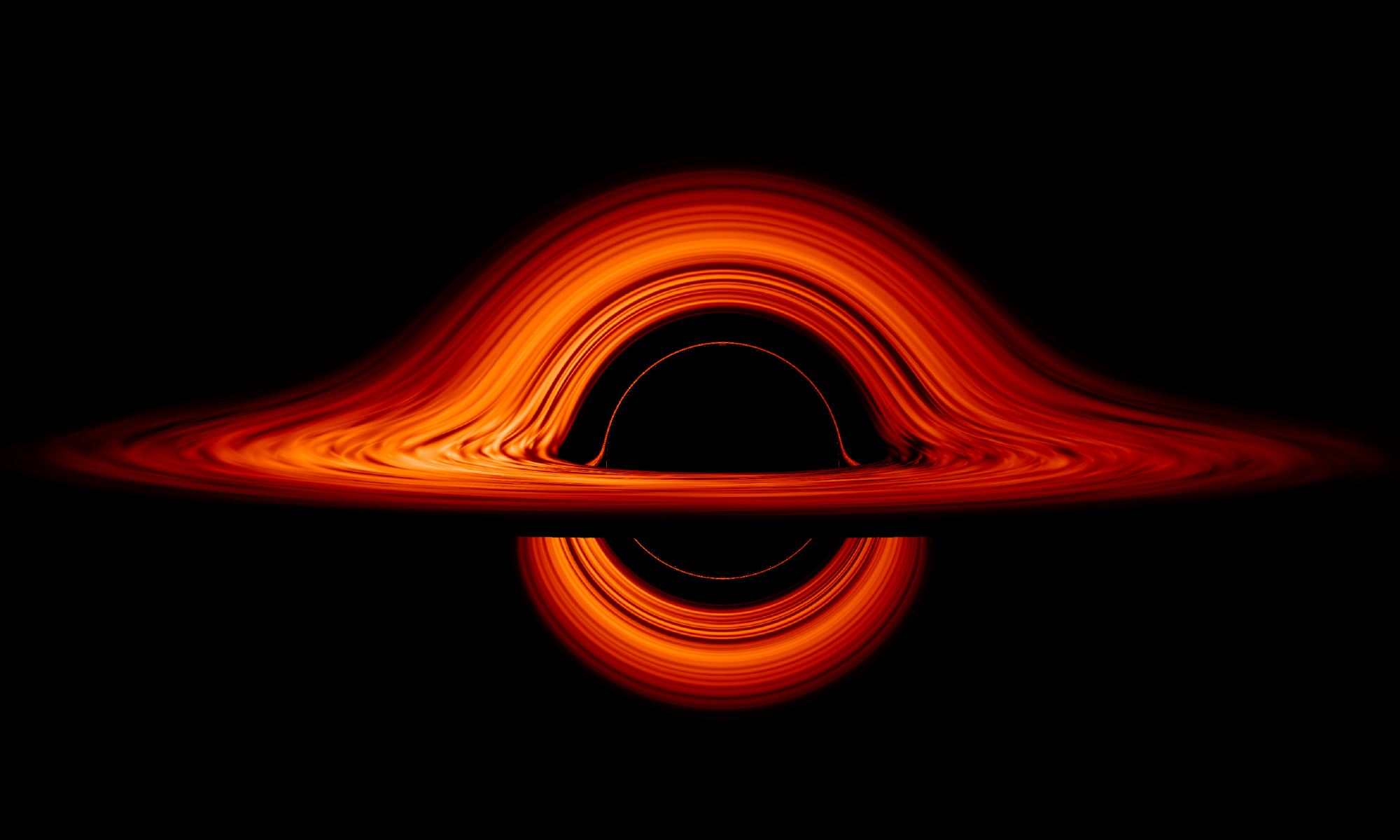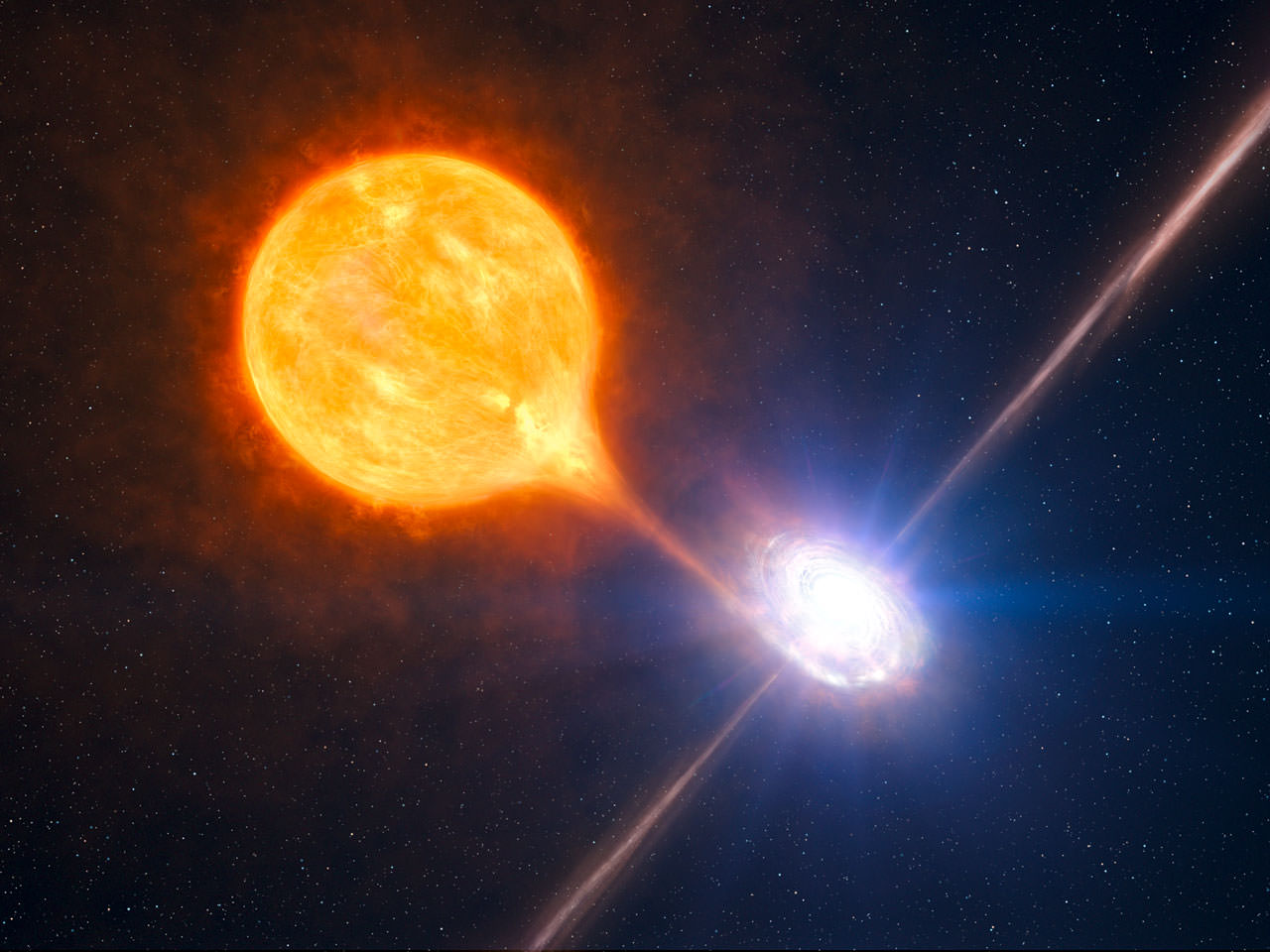Black holes are real. We see them throughout the cosmos, and have even directly imaged the supermassive black hole in M87 and our own Milky Way. We understand black holes quite well, but the theoretical descriptions of these cosmic creatures still have nagging issues. Perhaps the most famous issue is that of the singularity. According to the classical model of general relativity, all the matter that forms a black hole must be compressed into an infinite density, enclosed within a sphere of zero volume. We assume that somehow quantum physics will avert this problem, though without a theory of quantum gravity, we aren’t sure how. But the singularity isn’t the only infinite problem. Take, for example, the strange boundary known as the Cauchy horizon.
Continue reading “We Understand Rotating Black Holes Even Less Than We Thought”Simulating the Accretion Disk Around a Black Hole
Black holes are by their very nature, challenging to observe and difficult to spot. It’s usually observations of the accretion disk that reveal properties of the hidden black hole. There is often enough material within the accretion disk to make them shine so brightly that they can often be among the brightest objects in space. A wonderful image has been released which shows the highest resolution simulation of a black hole accretion disk ever created.
Continue reading “Simulating the Accretion Disk Around a Black Hole”Next Generation Event Horizon Telescope To Unlock Mysteries of Black Holes

The prospect of actually resolving the event horizon of black holes feels like the stuff of science fiction yet it is a reality. Already the Event Horizon Telescope (EHT) has resolved the horizon of the black holes at the centre of the Milky Way and M87. A team of astronomers are now looking to the next generation of the EHT which will work at multiple frequencies with more telescopes than EHT. A new paper suggests it may even be possible to capture the ring where light goes into orbit around the black hole at the centre of the Milky Way.
Continue reading “Next Generation Event Horizon Telescope To Unlock Mysteries of Black Holes”What’s Next for the Event Horizon Telescope? Twelve Possible New Targets
Both the Milky Way and a galaxy known as M87 have supermassive black holes at their core. These are the two largest black holes we know about and the Event Horizon Telescope has just captured stunning images of their event horizons. A new paper looks at what we might expect from a next generation EHT and highlights twelve targets that should be top of the list.
Continue reading “What’s Next for the Event Horizon Telescope? Twelve Possible New Targets”Black Holes: Why study them? What makes them so fascinating?
Over the last few months, Universe Today has explored a plethora of scientific fields, including impact craters, planetary surfaces, exoplanets, astrobiology, solar physics, comets, planetary atmospheres, planetary geophysics, cosmochemistry, meteorites, radio astronomy, extremophiles, and organic chemistry, and how these various disciplines help scientists and the public better understand our place in the cosmos.
Continue reading “Black Holes: Why study them? What makes them so fascinating?”After Swirling Around a Black Hole, Matter Just Falls Straight In

The physics surrounding black holes is just plain weird. A gravitational well so strong that not even light can escape can do some pretty strange things to normal matter. Over the decades, plenty of theories have been put forward about what those strange things might be. And now, a new paper from physicists at the University of Oxford has proved that, once again, Einstein’s theory of gravity was right.
Continue reading “After Swirling Around a Black Hole, Matter Just Falls Straight In”Fall Into a Black Hole With this New NASA Simulation

No human being will ever encounter a black hole. But we can’t stop wondering what it would be like to fall into one of these massive, beguiling, physics-defying singularities.
NASA created a simulation to help us imagine what it would be like.
Continue reading “Fall Into a Black Hole With this New NASA Simulation”Gravastars are an Alternative Theory to Black Holes. Here's What They'd Look Like

One of the central predictions of general relativity is that in the end, gravity wins. Stars will fuse hydrogen into new elements to fight gravity and can oppose it for a time. Electrons and neutrons exert pressure to counter gravity, but their stability against that constant pull limits the amount of mass a white dwarf or neutron star can have. All of this can be countered by gathering more mass together. Beyond about 3 solar masses, give or take, gravity will overpower all other forces and collapse the mass into a black hole.
Continue reading “Gravastars are an Alternative Theory to Black Holes. Here's What They'd Look Like”A New Idea to Harness Energy From Black Holes
Fifty years ago, English mathematical physicist and Nobel-prize winner Roger Penrose proposed that energy could be extracted from the space around a rotating black hole. Known as the ergosphere, this region lies just outside an event horizon, the boundary within which nothing can escape a black hole’s gravitational pull (even light). It is also here where infalling matter is accelerated to incredible speeds and emits all kinds of energy.
This became known as the Penrose Process, which many theorists have since expanded on. The latest comes from a study conducted by researchers from Columbia University and the Universidad Adolfo Ibáñez in Chile. With support from organizations like NASA, they demonstrated how a better understanding of the physics at work around spinning black holes could allow us to harness their energy someday.
Continue reading “A New Idea to Harness Energy From Black Holes”Light Behaves Really Strangely Around a Black Hole
Black holes are famous for being inescapable. Within the event horizon of these celestial objects, matter and even light enter and then disappear forever. However, beyond the event horizon, black holes are known to form accretion disks from which light can escape. In fact, this is how astronomers are able to confirm the presence of black holes and determine their properties (i.e. mass, spin rate, etc.)
However, according to a recent NASA-funded study led by researchers from the California Institute of Technology (Caltech), there is evidence that not all light emanating from a black hole’s disk simply escapes. According to their observations, some of the light escaping from the disk is pulled back in by the black hole’s gravity and reflected off the disk again. These observations confirm something astronomers have theorized for about forty years.
Continue reading “Light Behaves Really Strangely Around a Black Hole”





